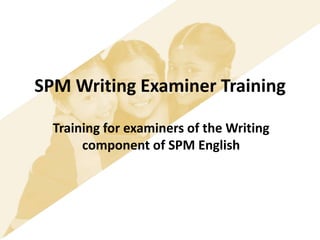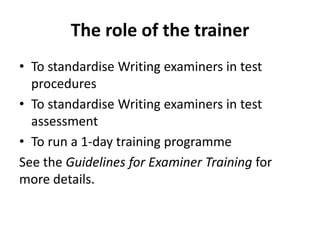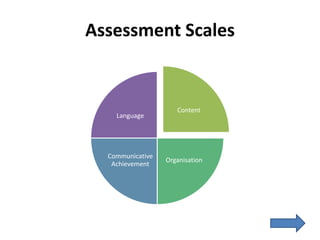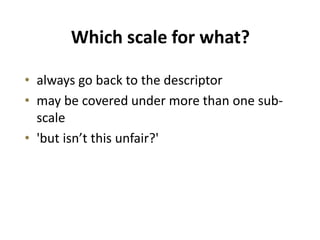The document provides an overview of the training for examiners of the SPM English Writing component, outlining the aims to prepare master trainers and familiarize them with the test materials and assessment scales. It details the modules that will be covered including test format, assessment criteria, and practicing rating performances using the standards. The training aims to standardize examiners in administering and assessing the Writing test which is benchmarked to CEFR levels B1 to B2.












































































































